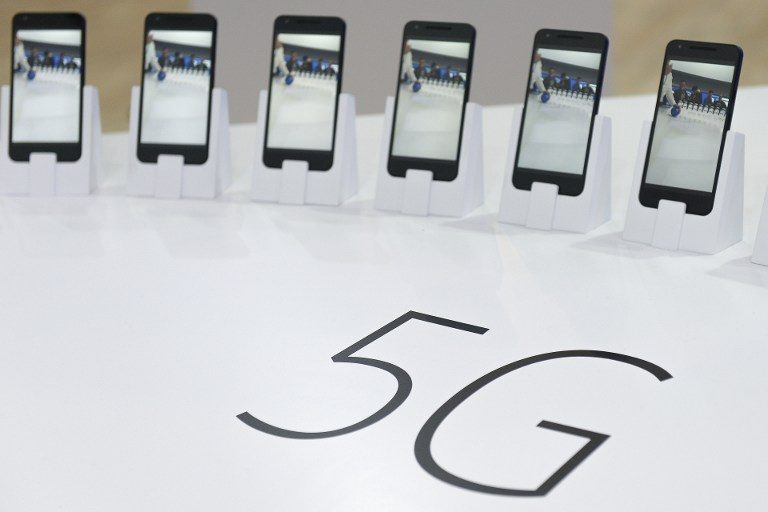SUMMARY
This is AI generated summarization, which may have errors. For context, always refer to the full article.

We approach the next generation of mobile communications with the testing of 5G networks underway by network providers around the world and expected for launch by 2020 in the Philippines. 5G opens up exciting possibilities for Filipinos, promising ultrafast speeds that can support new types of IoT applications where the levels of bandwidth required far exceeds the capacity of 4G mobile networks.
Network densification
The main difference from 4G to 5G will be the increased network speed and capacity. 5G is expected move data 100 times faster than you see today, which in turn will support new types of applications and connectivity across a wider range of devices. It follows that with this increase in speed, demands on mobile data and bandwidth will grow. This means more cells will be needed as 5G requires a denser network of towers to handle the traffic – a process called network densification.
Currently, mobile networks rely largely on macrocells to handle all connections within a specific geographic area. Increasingly, network operators are deploying low-powered small cells to areas already covered by macrocells to help increase capacity in locations that see high user demand, while avoiding the expense of procuring larger cell sites.
This combination of macrocells and small cells is known as a heterogeneous network, or HetNet for short. They are an important feature of LTE-Advanced networks and will almost certainly be standardised with 5G. They have many advantages, particularly in terms of flexibility and spectrum efficiency.
5G networks need fiber
5G networks promise to deliver fiber-like speeds over a wireless connection. In order to achieve these speeds, networks need to be supported by an advanced fiber infrastructure. From the macrocells and small cells, to the data centres that deliver apps and services, it is crucial that fiber connects all non-wireless aspects of the network for 5G to reach its potential.
Bringing the fiber as close as possible to the end user is key to building an ultrafast 5G-ready network. More fiber allows for a greater number of cells, and ultimately more bandwidth, which will be essential for forthcoming developments in AI, such as autonomous vehicles and virtual reality, all requiring large amounts of bandwidth.
While steady expansion of fiber coverage is observed in the Philippines, barriers to adoption still exist including the lack of policy on access to poles in high-density areas, and the high cost of deploying infrastructure in geographically challenging areas. These are currently the two main challenges that the Philippine faces.
So, with the Philippines’ growing appetite for bandwidth-heavy activities such as video streaming and future usage of IoT, it is more important than ever for the country to support the expansion of fiber coverage – which will, in turn, enable successful access to 5G.
Globally, millions of kilometers of fiber have already been deployed, which presents an opportunity to rapidly expand 5G-ready networks using HetNet technology. The existing fixed-line broadband infrastructure matters. By leveraging current infrastructure, network operators can quickly scale 5G-ready networks by deploying small cells at cabinets for FTTH connections. This approach, where both fixed line and wireless services share the same physical resources, such as fiber or a street cabinet, is known as convergence.
Network convergence
Convergence offers many benefits to operators, not least of which is an overall reduction in costs. By utilizing the same fiber for different types of connections, operators can maximize use of existing assets and enjoy savings in terms of installation and maintenance costs. Converged networks also have the potential for significantly less power usage than standard networks, which will be welcome news for operators facing pressures to lower their carbon footprint.
Disruption to communities can also be minimized: civil works will be reduced as the same street and pit would not need to be dug up multiple times for different types of connections or upgrades. Convergence effectively enables the network architecture to be future-ready, and makes it easier for operators to quickly update the technology or add new services using existing fiber, in a cost-effective manner.
How Corning is helping operators build converged networks
As operators invest in future-ready infrastructure, network flexibility and scalability is critical as the need for easy access and reliable, secure connectivity continues to surge. Operators need advanced fiber infrastructure and solutions that can be configured in ways that can allow them to adapt to the changing needs of their subscribers, fast.
Corning recently launched a multiuse platform to cost-effectively prepare networks for densification and 5G, enabling a mix of network architectures to access the same fiber backbone. The converged architecture of the multiuse platform solution allows operators and municipalities to rapidly deploy fiber networks that can also support 5G wireless connectivity.
The multiuse platform takes the single and multi-fiber pre-connectorized technology, which has proved successful in FTTH deployments worldwide, to the next stage by adding an additional layer of flexibility to outside plant (OSP) connectivity hardware. This enables configurations to be quickly customized and adapted, giving operators the freedom to update the infrastructure, as and when required, with minimal disruption. – Rappler.com
Paul Ng is the marketing manager for Southeast Asia, Carrier Networks, at Corning Optical Communications.
Corning Optical Communications is a US-based provider of end-to-end fiber and wireless solutions for communications networks.
Add a comment
How does this make you feel?
There are no comments yet. Add your comment to start the conversation.